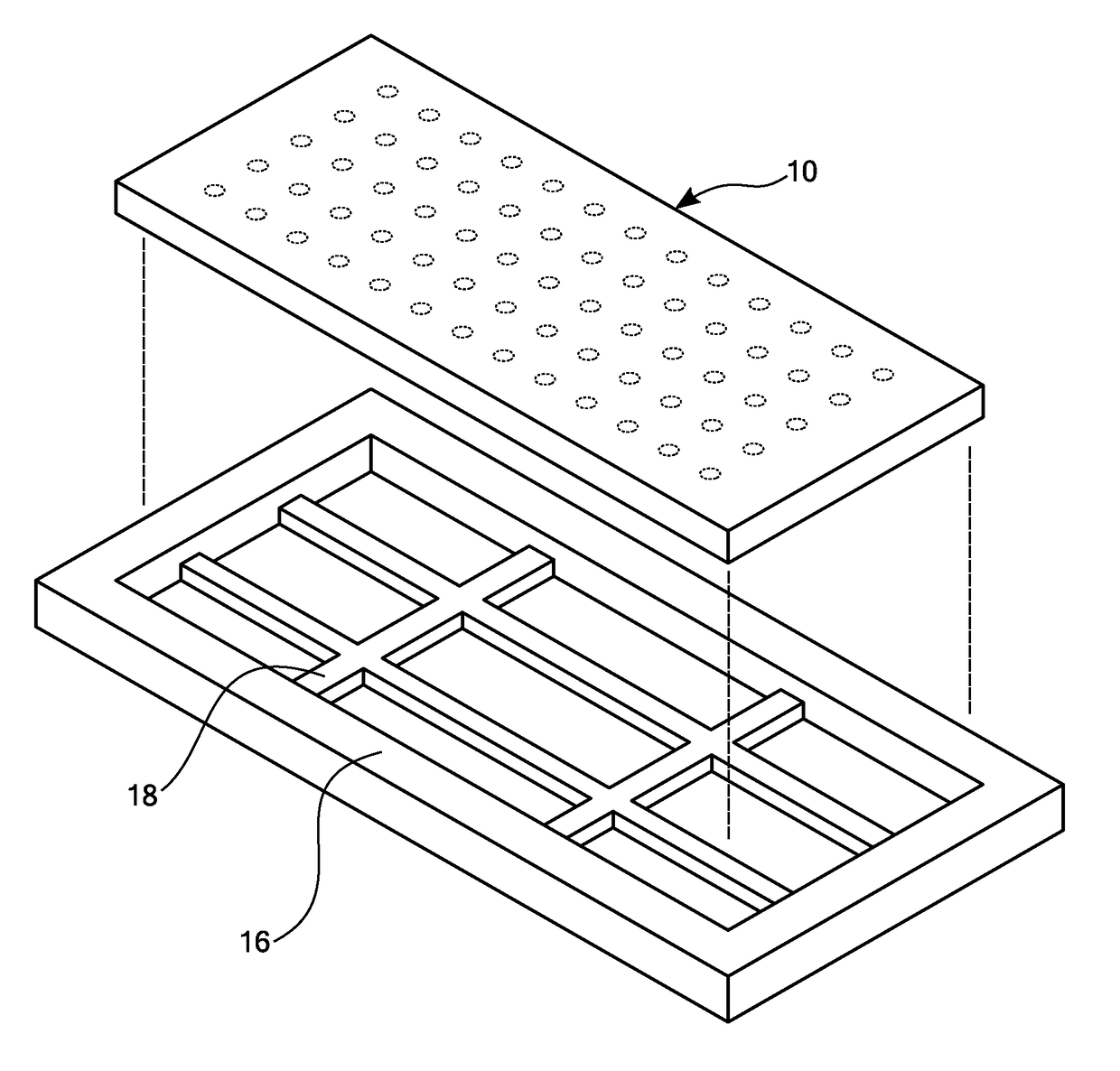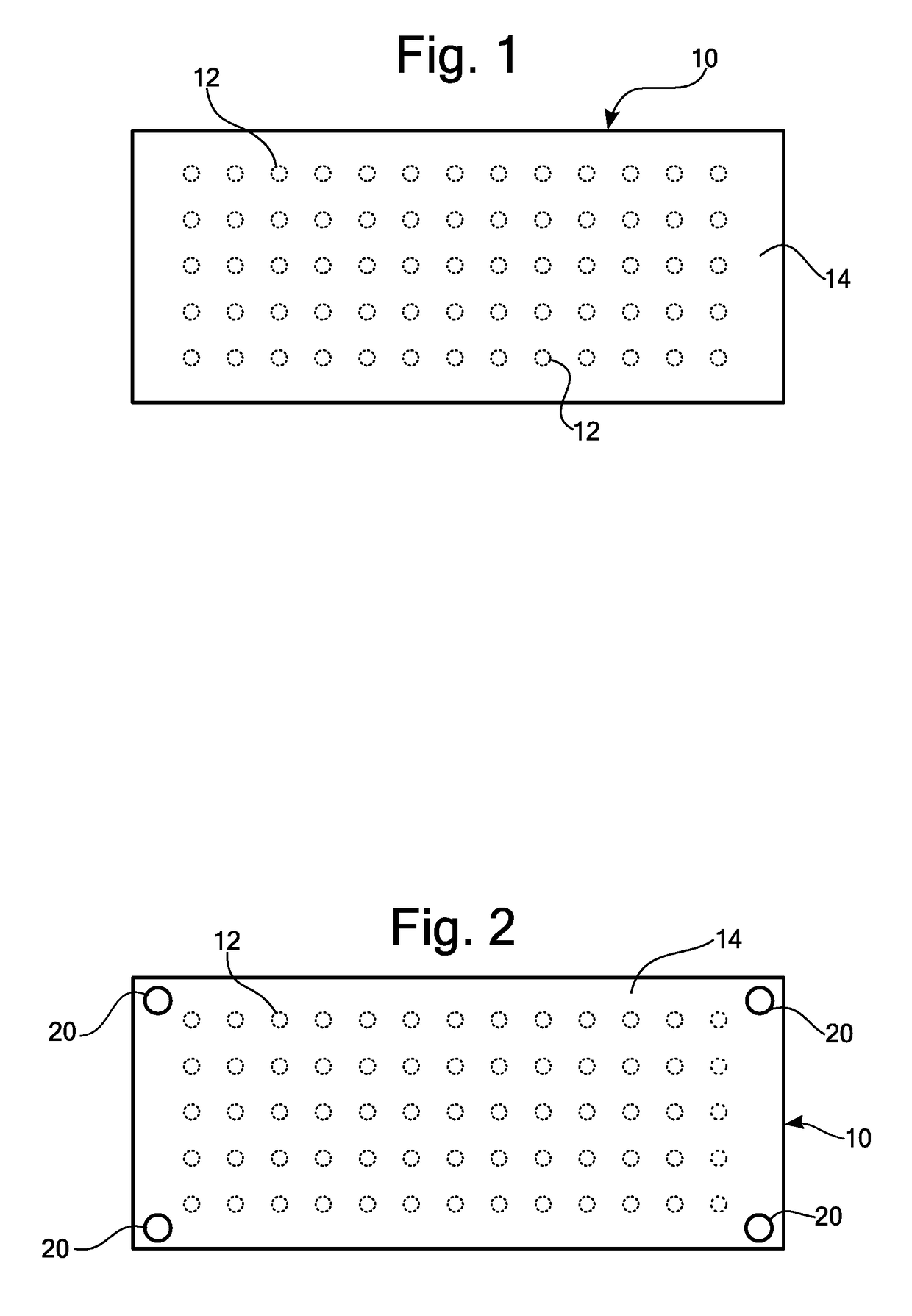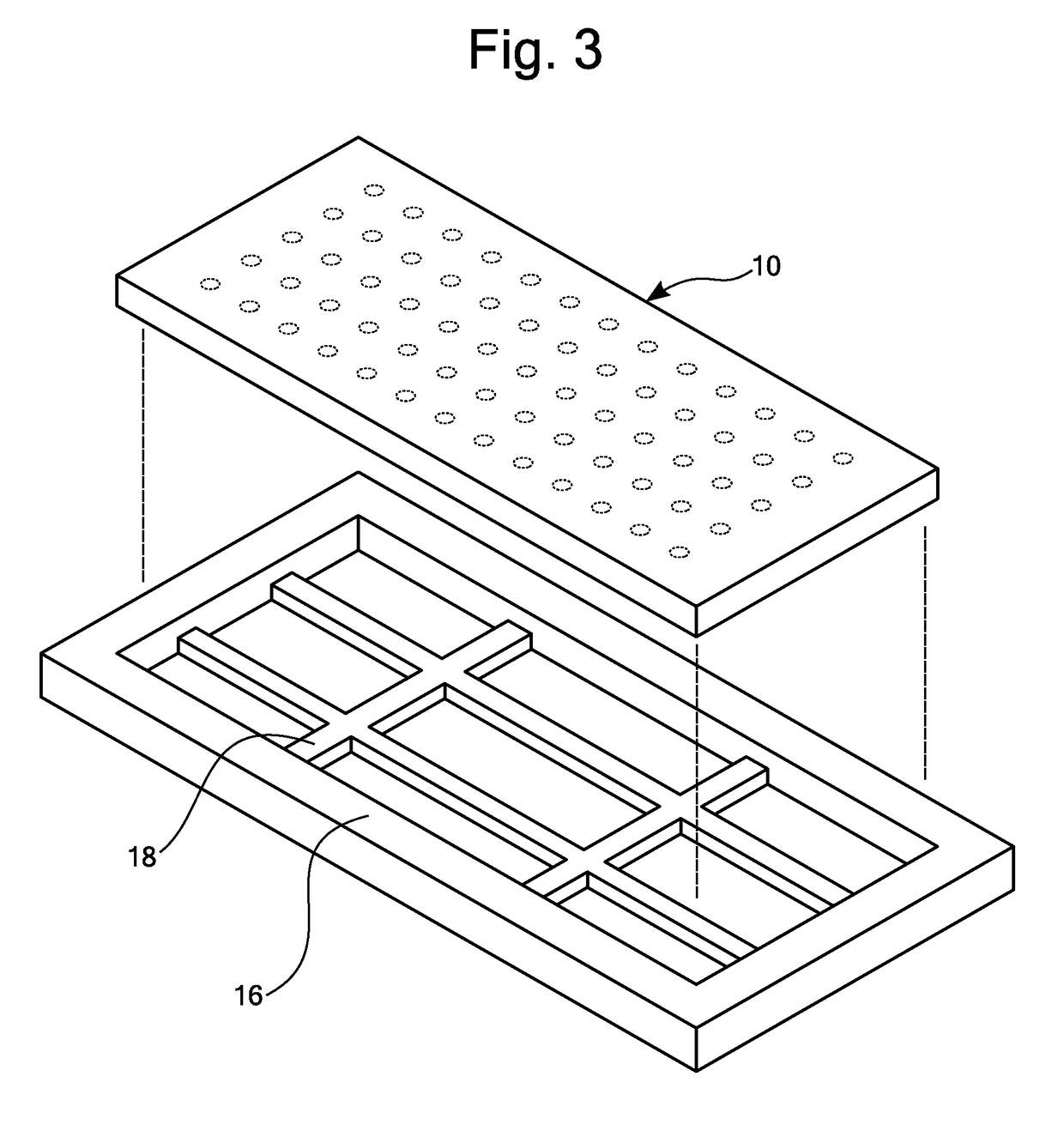Method and apparatus for a hardness test block
a test block and hardness technology, applied in the field of hardness testing equipment and methods, can solve the problems of limiting the layout method of test sites to 65 test sites per block, affecting the hardness of the material, and affecting the quality of the test block
- Summary
- Abstract
- Description
- Claims
- Application Information
AI Technical Summary
Benefits of technology
Problems solved by technology
Method used
Image
Examples
Embodiment Construction
[0025]Shown in FIG. 1, is a typical Brinell 2.5 inch by 6 inch test block 10 showing the grid pattern of 65 test sites 12, with each site accommodating a 3.5 mm expected diameter indentation and meeting ASTM spacing requirements. Note that this layout does not use the staggered method of laying out test sites using a staggered technique that can provide a greater number of test sites for the same sized test block. (See U.S. Pat. No. 3,352,148, issued to Johnson on Nov. 14, 1967.) However, the techniques and methods described herein can also be applied to test blocks having a staggered pattern as disclosed by Johnson.
[0026]All of test sites 12 are provided on surface 14. The layout of sites 12 can be shown inscribed on surface 14 by being imprinted or etched on surface 14 or surface 14 can be left blank. However, due to the ASTM spacing requirements, the number of test sites is limited irrespective of whether surface 14 is marked with the location of the test sites or left blank. Als...
PUM
 Login to View More
Login to View More Abstract
Description
Claims
Application Information
 Login to View More
Login to View More - R&D
- Intellectual Property
- Life Sciences
- Materials
- Tech Scout
- Unparalleled Data Quality
- Higher Quality Content
- 60% Fewer Hallucinations
Browse by: Latest US Patents, China's latest patents, Technical Efficacy Thesaurus, Application Domain, Technology Topic, Popular Technical Reports.
© 2025 PatSnap. All rights reserved.Legal|Privacy policy|Modern Slavery Act Transparency Statement|Sitemap|About US| Contact US: help@patsnap.com



